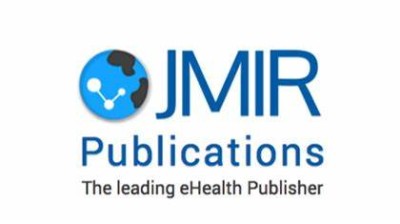Heart Rate Variability Biofeedback to Treat Anxiety in Young People With Autism Spectrum Disorder: Findings From a Home-Based Pilot Study
Categorieën
Steekwoorden
Categorieën
Steekwoorden
- Toon alle
- ADHD
- Angst/Paniek
- Bloeddruk
- Burnout
- Chronische pijn
- Cognitieve functie
- Cortisol/DHEA
- Dementie
- Depressie
- Diabetes
- Global Coherence
- Hart- & Vaatziekten
- Intuitie & Bewustzijn
- Kanker
- Kinderen/jeugd
- Kosten
- Leiderschap
- Meditatie/Mindfulness
- Metabool syndroom
- Obesitas/eetstoornis
- PTSS
- Schizofrenie
- Slaap & vermoeidheid
- Social Coherence
- Stress
- Veerkracht
- Wetenschap HRV & Coherentie
- Zwangerschap
Heart Rate Variability Biofeedback to Treat Anxiety in Young People With Autism Spectrum Disorder: Findings From a Home-Based Pilot Study

Background: People with autism spectrum disorder (ASD) frequently experience high levels of anxiety. Despite this, many clinical settings do not provide specialist ASD mental health services, and demand for professional support frequently outstrips supply. Across many sectors of health, investigators have explored digital health solutions to mitigate demand and extend the reach of professional practice beyond traditional clinical settings.
Objective: This critical appraisal and pilot feasibility study examines heart rate variability (HRV) biofeedback as an approach to help young people with ASD to manage anxiety symptoms outside of formal settings. The aim is to explore the use of portable biofeedback devices to manage anxiety, while also highlighting the risks and benefits of this approach with this population.
Methods: We assessed the feasibility of using home-based HRV biofeedback for self-management of anxiety in young people with ASD. We adopted coproduction, involving people with ASD, to facilitate development of the study design. Next, a separate pilot with 20 participants with ASD (n=16, 80% male participants and n=4, 20% female participants, aged 13-24 years; IQ>70) assessed adoption and acceptability of HRV biofeedback devices for home use over a 12-week period. Data were collected from both carers and participants through questionnaires and interviews; participants also provided single-lead electrocardiogram recordings as well as daily reports through smartphone on adoption and use of their device.
Results: Pre-post participant questionnaires indicated a significant reduction in anxiety in children (t6=2.55; P=.04; Cohen d=0.99) as well as adults (t7=3.95; P=.006; Cohen d=0.54). Participant age was significantly negatively correlated with all HRV variables at baseline, namely high-frequency heart rate variability (HF-HRV: P=.02), the root mean square of successive differences in normal heartbeat contractions (RMSSD: P=.02) and the variability of normal-to-normal interbeat intervals (SDNN: P=.04).
At follow-up, only SDNN was significantly negatively correlated with age (P=.05). Levels of ASD symptoms were positively correlated with heart rate both before (P=.04) and after the intervention (P=.01). The majority (311/474, 65.6%) of reports from participants indicated that the devices helped when used. Difficulties with the use of some devices and problems with home testing of HRV were noted. These initial findings are discussed within the context of the strengths and challenges of remotely delivering a biofeedback intervention for people with ASD.
Conclusions: HRV biofeedback devices have shown promise in this pilot study. There is now a need for larger evaluation of biofeedback to determine which delivery methods achieve the greatest effect for people with ASD.
Download het volledige artikel, klik hier